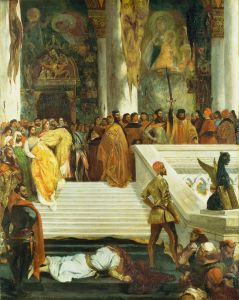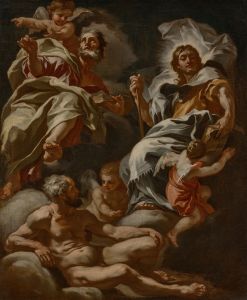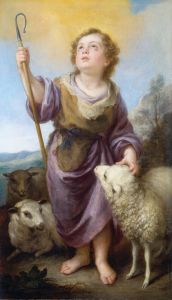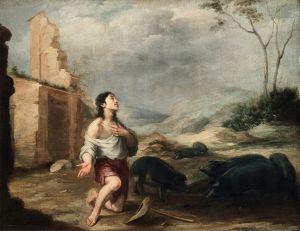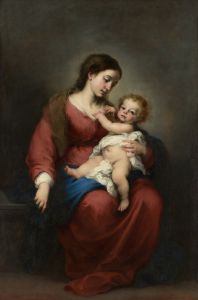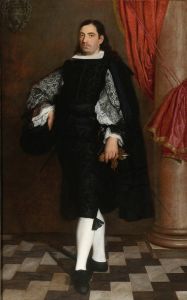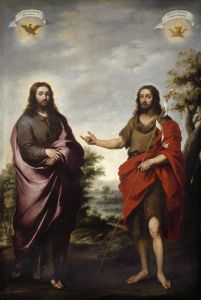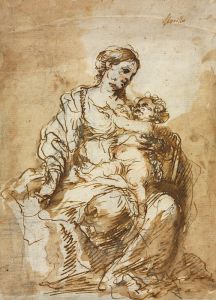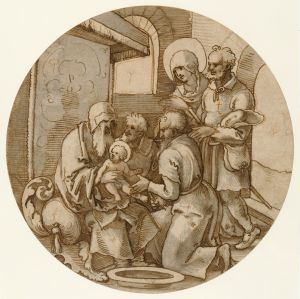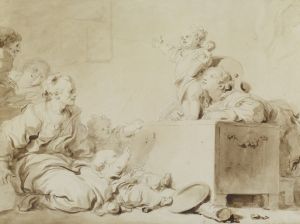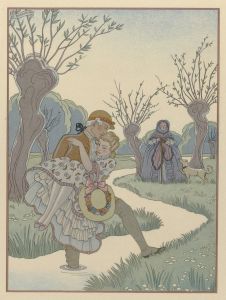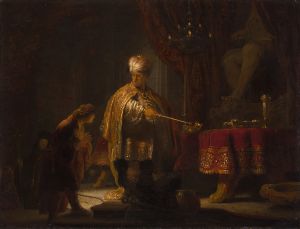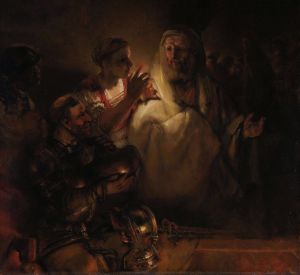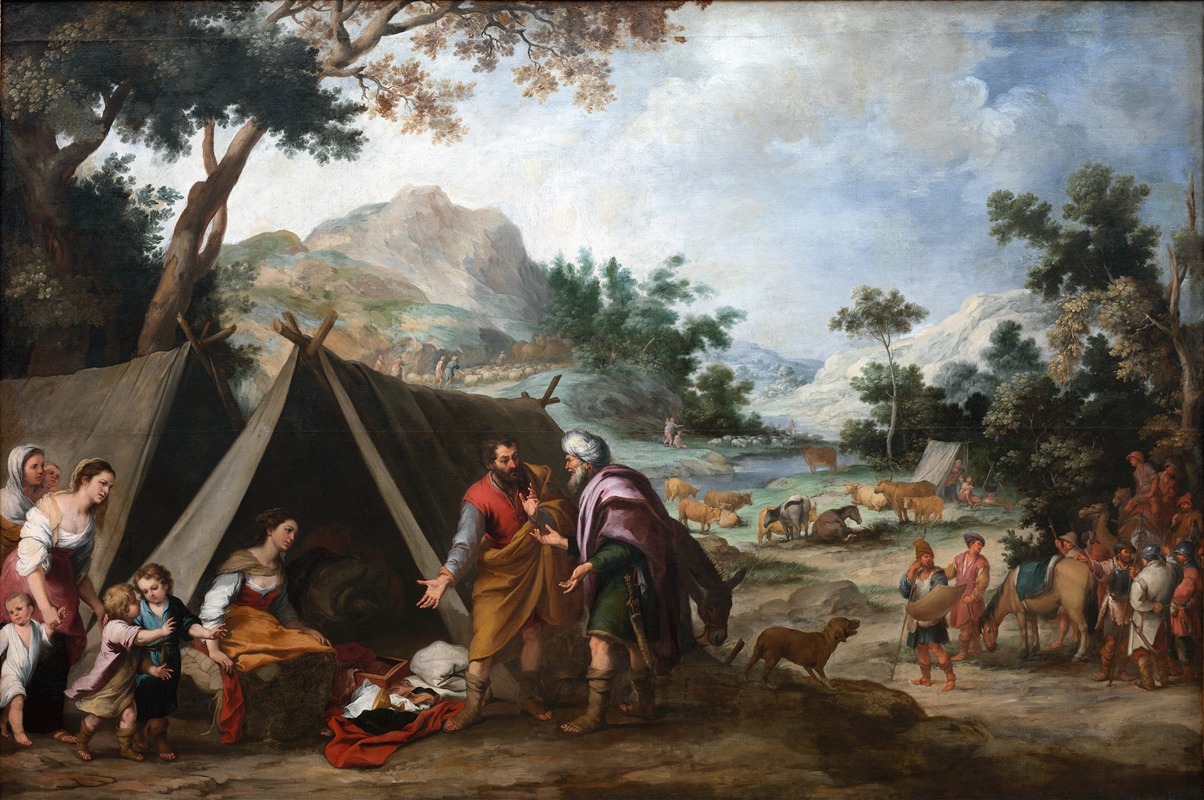
Laban Searching for his Stolen Household Gods
A hand-painted replica of Bartolomé Estebán Murillo’s masterpiece Laban Searching for his Stolen Household Gods, meticulously crafted by professional artists to capture the true essence of the original. Each piece is created with museum-quality canvas and rare mineral pigments, carefully painted by experienced artists with delicate brushstrokes and rich, layered colors to perfectly recreate the texture of the original artwork. Unlike machine-printed reproductions, this hand-painted version brings the painting to life, infused with the artist’s emotions and skill in every stroke. Whether for personal collection or home decoration, it instantly elevates the artistic atmosphere of any space.
Bartolomé Estebán Murillo, a prominent Spanish Baroque painter, is known for his religious works, genre scenes, and portraits. One of his lesser-known works is "Laban Searching for his Stolen Household Gods." This painting illustrates a biblical scene from the Book of Genesis, where Laban, a patriarch, searches for his stolen household idols.
Murillo was born in Seville in 1617 and became one of the most celebrated painters of his time, renowned for his ability to capture the warmth and humanity of his subjects. His works often reflect the religious fervor of 17th-century Spain, and he was adept at depicting both sacred and everyday themes with equal skill and sensitivity.
"Laban Searching for his Stolen Household Gods" is based on the story from Genesis 31:19-35. In this narrative, Jacob, Laban's son-in-law, decides to leave Laban's household secretly, taking his family and possessions with him. Before their departure, Rachel, Jacob's wife and Laban's daughter, steals her father's household gods. When Laban discovers their absence, he pursues Jacob and confronts him, demanding the return of his gods. Unbeknownst to Jacob, Rachel has hidden the idols in her camel's saddle and sits on them, successfully concealing them from her father during his search.
Murillo's depiction of this scene would likely have been rich in detail and emotion, characteristic of his style. His ability to convey narrative through expressive figures and dynamic compositions would have brought this biblical story to life, engaging viewers with its dramatic tension and moral undertones.
The painting would have been executed with Murillo's typical use of soft, luminous colors and a keen attention to the play of light and shadow, enhancing the emotional impact of the scene. His skillful rendering of textures and fabrics would add to the realism and immediacy of the moment depicted.
Murillo's works were highly sought after during his lifetime, and he received numerous commissions from religious institutions and private patrons. His influence extended beyond Spain, impacting artists throughout Europe. Despite the challenges of his era, including economic hardships and political instability, Murillo's art remained a testament to the enduring power of faith and the human spirit.
While "Laban Searching for his Stolen Household Gods" may not be as widely recognized as some of Murillo's other masterpieces, it nonetheless exemplifies his mastery of storytelling through art. The painting reflects his deep understanding of biblical narratives and his ability to translate them into compelling visual forms.
Murillo's legacy endures through his extensive body of work, which continues to be studied and admired for its technical excellence and emotional depth. His paintings are housed in major museums and collections worldwide, serving as a lasting tribute to his artistic achievements and his contribution to the Baroque period.
In summary, Bartolomé Estebán Murillo's "Laban Searching for his Stolen Household Gods" is a testament to his skill in depicting biblical stories with clarity and emotion. Through his art, Murillo captures the essence of human experience, making timeless narratives accessible and engaging to audiences across generations.





